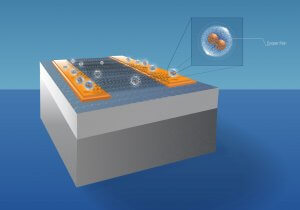Summary
The superconducting quantum computing architecture has seen rapid improvements over the last two decades. However, the coherence time of superconducting qubits is limited by unknown noise sources presumably existent at the interface between the insulator and the superconducting film. Carbon nanotubes (CNTs) are a promising material for use in Josephson-Junctions (JJs) given their unique properties, such as high electrical conductivity, pristine surface, inherent nanoscale dimension, and silicon-compatible processing. In this project, we are building gate-controlled JJs composed of CNT thin films (down-to-monolayer) positioned between two superconducting electrodes to act as a promising superconducting qubit for quantum computers. Aside from gate-controllability, this approach offers superb interface engineering capability, small integration footprint, and high-temperature operation. We expect the CNT film – JJ superconducting qubit will achieve superior performance relative to current state-of-the-art JJs and enable the development of scalable superconducting computation with extensions to arrays of CNT-JJs coupled to microwave and optical photon-waveguides.

Figure 1. Cooper pairs interacting with gate-controlled Jospehson-Junctions composed of CNT thin films
Related Content

Topological Properties of Exciton-Polaritons in a Kagome Lattice as a Solid-state Quantum Simulator
Summary In this project, we build a solid-state quantum simulator for engineering a specific Hamiltonian. Quantum simulators are purpose-built devices with little to no need for error correction, thereby making this type of hardware less demanding than universal quantum computers. Our platform consists of exciton-polariton condensates in multiple quantum-wells sandwiched in a semiconductor Bragg […]
December 8, 2018

Quantum Computational Resources in the Presence of Symmetry
Summary Fault-tolerance is essential to the performance of quantum technologies, but known schemes are extremely resource intensive. Thus, improving existing schemes or inventing new schemes is of central importance. This joint project is based on the realization that fault-tolerance schemes make use of symmetries in fundamental ways, and that studying the problem of fault tolerance […]
March 13, 2019



